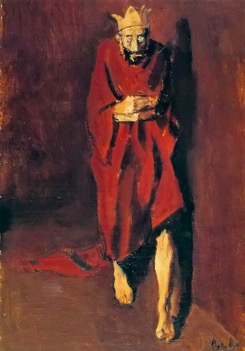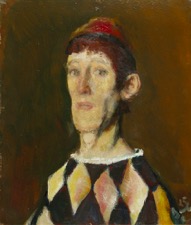The Museum, Education and Worldviews
19/05/14 08:27 Filed in: Culture | Philosophy
My own experience in visiting famous museums (such as National Gallery, London, Art Institute, Chicago, or National Museum of Art, Bucharest) thought me that the events organized there are at least of three kinds: historical overviews of art (based and limited on/to their collections), individual artist, and trend or school overview (Impressionism, Cubism, Expressionism, etc.). For me as a visitor it was helpful, but I never had the opportunity to see some event as that described by Gaskell around the painting done by Rubens (Gaskell 2003).
I argue in this paper that a good museum can offer a learning and enriching experience, and the curators role is decisive. An event at the museum has the potentiality of so much in the areas learning, understanding cultures, and growth. For achieving that, the world of the artists and of the viewers have to be brought center stage.
The establishment and function of a museum depends on many factors: the strategy and the means for building varied collections, the premises for organizing varied events, and the extent of the permanent display. At the center of all these is the curator and his/her vision and understanding of art.
It is expected that such a person should be of extensive knowledge in the varied areas of art and with a refined taste that is properly ruled and stable. Such a person will take care to survey the broadest possible range of experience (see Gracyk 2011 on the details of Hume’s Aesthetics). In many cases such a person will have to deal with works of geniuses. Kant taught us that such people are persons who take the lead and determine procedure, they have a definite concept of the product, the display of the product in the expression of aesthetic ideas containing a wealth of material for effecting that intention, and harmony of imagination and understanding (Kant 1790, I.XLIX). These insights in the profile of a genius offer me the major lines for building an argument in which the works of artists can be used well in a museum.
If the work of the artists are well integrated in their own lives and circumstances, the museum is representing them in a fair way, but also their work can be used in advancing a variety of perspectives and outlooks. They will be part of the avant-garde and that is why, their works will break new ground. Because of this, to interpret, and then present to others, the meaning of their works is such a complex job. They both experiment and know what they want to convey. The richness of perspectives and ideas is there to be explored by the curator and museum people.
In this paper I will illustrate this by making reference to one of my favorite paintings of Corneliu Baba, The Mad King (Collection of the Artist, 1980). If I would ever have the opportunity to organize an event about Ways of Resistance in A Totalitarian Regime I would select this painting as the center piece. The reasons for selecting it are that the climax of totalitarianism leads to fear and isolation, paranoia and madness. This painting is part of a cycle/series into which Baba intended to convey his reaction to the tyrannical dominion of Ceausescu in the last decade of his presidency in The Socialist Republic of Romania. This series of 'mad kings' has to be kept together with the other series of 'Harlequins' who are Baba's favorite characters for displaying the dual integrated attitudes of being part of a circus and of a tragic life. 'The Mad King' is a parody of the Communist presidency/government in its isolation and fear trying to move out of the corner into which it placed itself. The mad king is barefoot, pointing to his poverty, and walks on his toes showing its fear. Being true to Baba's intentions I would organize the space of the exhibition with large black and white, blurred images from Ceausescu's huge popular meetings into which he is acclaimed as the 'most beloved son of the people,' when in fact he is alone, fearful and deluded. The tragedy of our life being led by a mad king is portrayed by the Harlequin who is mute and with a mask and dressed in a diamond-patterned costume. Everyone is alone, isolated and fearful.
This hypothetical example from my personal history is used to illustrate the need to integrate a particular work of art in the context into which was created, and thus to enhance the viewers's aesthetic learning experience. A museum can have this educative role by presenting to the public a glimpse of history and the civic reaction to the establishment. In this particular case the art was the chosen medium for resistance in a totalitarian regime.
An artist of this calibre has to ability to innovate in the area of communication opening new ways of conveying the truth; imagination, understanding, and mastery work in harmony to take a stand risking everything for the sake of freedom. In the last fifteen years of life Baba was isolated by the Communist regime even if he was the greatest Romanian painter at the time. Through such an event a museum steps in the life of society and brings a critical vision about it.
A museum can be an important player in the cultural life of the city, and the curator is the person who needs to bring together the world of the artist and the world of the viewer to help them both: the artist to communicate his message, and the viewer to be challenged by the vision of the artist, and thus, to learn about a different, better or worse outlook on the world. At this point I remember that in a totalitarian regime the museum was a tool for the government propaganda. The curator was a tool in the hand of the government to communicate its message. That is why, the freedom of speech is so important, and the liberty guaranteed to the institutions is necessary for the being true to the artists and to the public.
Bibliography
Gaskell, Ivan. 2003. Being True to Artists. The Journal of Aesthetics and Art Criticism Vol. 61, No. 1, 53-60.
Gracyk, Ted, "Hume's Aesthetics", The Stanford Encyclopedia of Philosophy (Winter 2011 Edition), Edward N. Zalta (ed.), URL =
Kant, Immanuel. Critique of Judgment, I.XLIX. 1790.
The establishment and function of a museum depends on many factors: the strategy and the means for building varied collections, the premises for organizing varied events, and the extent of the permanent display. At the center of all these is the curator and his/her vision and understanding of art.
It is expected that such a person should be of extensive knowledge in the varied areas of art and with a refined taste that is properly ruled and stable. Such a person will take care to survey the broadest possible range of experience (see Gracyk 2011 on the details of Hume’s Aesthetics). In many cases such a person will have to deal with works of geniuses. Kant taught us that such people are persons who take the lead and determine procedure, they have a definite concept of the product, the display of the product in the expression of aesthetic ideas containing a wealth of material for effecting that intention, and harmony of imagination and understanding (Kant 1790, I.XLIX). These insights in the profile of a genius offer me the major lines for building an argument in which the works of artists can be used well in a museum.
If the work of the artists are well integrated in their own lives and circumstances, the museum is representing them in a fair way, but also their work can be used in advancing a variety of perspectives and outlooks. They will be part of the avant-garde and that is why, their works will break new ground. Because of this, to interpret, and then present to others, the meaning of their works is such a complex job. They both experiment and know what they want to convey. The richness of perspectives and ideas is there to be explored by the curator and museum people.

In this paper I will illustrate this by making reference to one of my favorite paintings of Corneliu Baba, The Mad King (Collection of the Artist, 1980). If I would ever have the opportunity to organize an event about Ways of Resistance in A Totalitarian Regime I would select this painting as the center piece. The reasons for selecting it are that the climax of totalitarianism leads to fear and isolation, paranoia and madness. This painting is part of a cycle/series into which Baba intended to convey his reaction to the tyrannical dominion of Ceausescu in the last decade of his presidency in The Socialist Republic of Romania. This series of 'mad kings' has to be kept together with the other series of 'Harlequins' who are Baba's favorite characters for displaying the dual integrated attitudes of being part of a circus and of a tragic life. 'The Mad King' is a parody of the Communist presidency/government in its isolation and fear trying to move out of the corner into which it placed itself. The mad king is barefoot, pointing to his poverty, and walks on his toes showing its fear. Being true to Baba's intentions I would organize the space of the exhibition with large black and white, blurred images from Ceausescu's huge popular meetings into which he is acclaimed as the 'most beloved son of the people,' when in fact he is alone, fearful and deluded. The tragedy of our life being led by a mad king is portrayed by the Harlequin who is mute and with a mask and dressed in a diamond-patterned costume. Everyone is alone, isolated and fearful.

This hypothetical example from my personal history is used to illustrate the need to integrate a particular work of art in the context into which was created, and thus to enhance the viewers's aesthetic learning experience. A museum can have this educative role by presenting to the public a glimpse of history and the civic reaction to the establishment. In this particular case the art was the chosen medium for resistance in a totalitarian regime.
An artist of this calibre has to ability to innovate in the area of communication opening new ways of conveying the truth; imagination, understanding, and mastery work in harmony to take a stand risking everything for the sake of freedom. In the last fifteen years of life Baba was isolated by the Communist regime even if he was the greatest Romanian painter at the time. Through such an event a museum steps in the life of society and brings a critical vision about it.
A museum can be an important player in the cultural life of the city, and the curator is the person who needs to bring together the world of the artist and the world of the viewer to help them both: the artist to communicate his message, and the viewer to be challenged by the vision of the artist, and thus, to learn about a different, better or worse outlook on the world. At this point I remember that in a totalitarian regime the museum was a tool for the government propaganda. The curator was a tool in the hand of the government to communicate its message. That is why, the freedom of speech is so important, and the liberty guaranteed to the institutions is necessary for the being true to the artists and to the public.
Bibliography
Gaskell, Ivan. 2003. Being True to Artists. The Journal of Aesthetics and Art Criticism Vol. 61, No. 1, 53-60.
Gracyk, Ted, "Hume's Aesthetics", The Stanford Encyclopedia of Philosophy (Winter 2011 Edition), Edward N. Zalta (ed.), URL =
Kant, Immanuel. Critique of Judgment, I.XLIX. 1790.
blog comments powered by Disqus